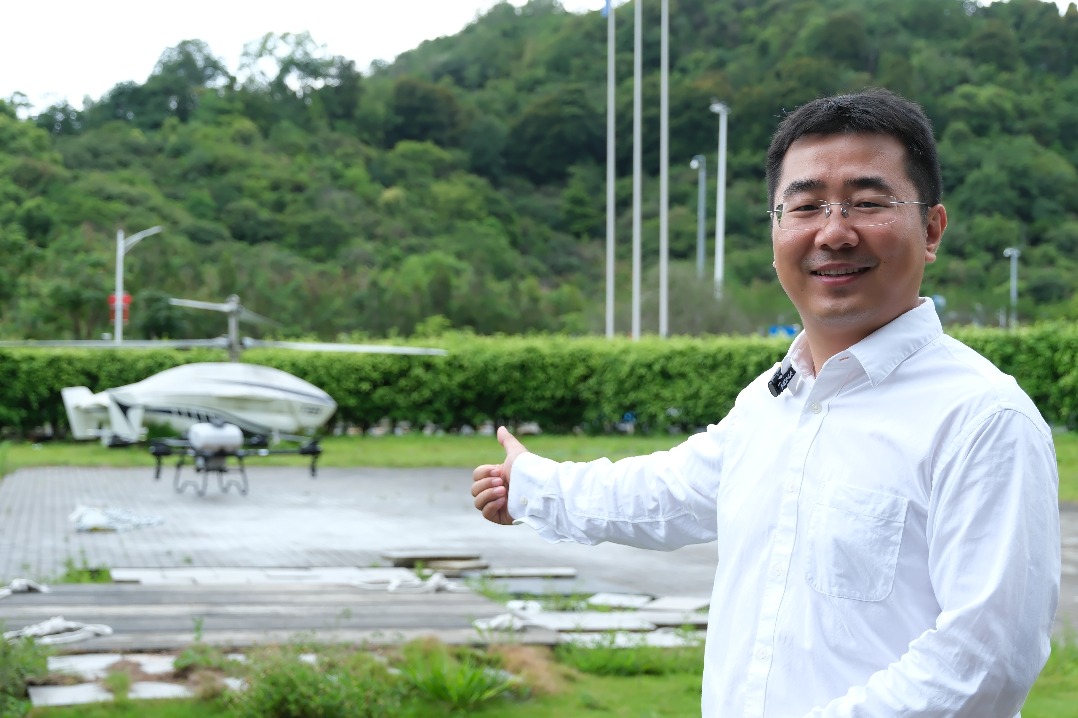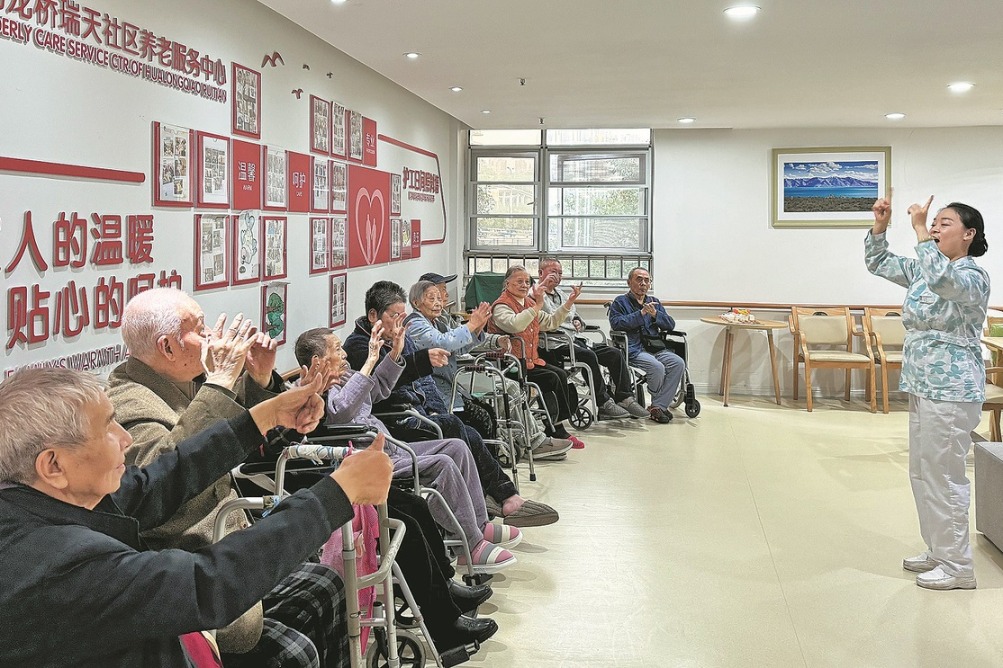A question of culture
TV quiz show aims to shine a spotlight on our ancient heritage, Wang Kaihao reports.

What is the oldest known cultural relic with an inscription of the word zhongguo (China)? Which important artifact witnessed the origins of acupuncture in traditional Chinese medicine? When was the earliest known dated Chinese printed work created?
The answers: A 3,000-year-old bronze vessel known as He Zun, unearthed in 1963 in Baoji, Shaanxi province, has the 122-character inscription of the word zhongguo; a Han Dynasty (206 BC-AD 220) figurine of lacquerware found in 2013 in Mianyang, Sichuan province, was a clear guide for medical practitioners to find the right position for acupuncture; and the Diamond Sutra printed in 868 remains evidence of the cultural prosperity of the Tang Dynasty (618-907).
The latter was lost overseas and is now housed at the British Library.
The questions and answers are from a new quiz show, where contestants are urged to think quickly and audiences get to know more about the country's old civilization that is reflected in its cultural heritage.
The 12-episode show Zhongguo Guobao Dahui ("Chinese conference of national treasures") began airing on Sept 4 on Channel 2 of China Central Television, with a new episode airing every Saturday.
Coproduced by China Media Group, to which CCTV is affiliated, and the National Cultural Heritage Administration, the program lives up to its grand name.
Lasting glamour
About 1,000 cultural relics from 140 museums and cultural institutions inspired the producers to design the show.
"This is the first time a domestic quiz show is focusing on stories of cultural relics and their relevant knowledge," says Chen Hengting, director of the program.
"Using the 'national treasures' as a platform, we want people to understand the richness and lasting glamour of Chinese civilization."
He adds that achievements of ancient China in politics, economy, culture, social development, legal system, science and technology, medicine, ecology and other fields can be showcased through such relics.
"Many cultural relics in our program are well-known," Chen says.
"But one of our guiding principles is to introduce the lesser-known aspects about them. Exploring the unknown, we can widely spread new knowledge."
Even from one relic, a picture of Chinese culture can be seen from various facets.
For example, nine questions are designed surrounding a famous Han-era brocade piece, which was unearthed from the Niya ruins site in the Xinjiang Uygur autonomous region.
The piece, which was first used as an arm protector, is best recognized for its woven characters, which roughly translates to "five stars rising in the east to benefit China".
Though fans for Chinese archaeology should be familiar with this brocade piece with auspicious patterns, they may still find many surprises when scrutinizing it. Some kaleidoscopic questions about Chinese philosophy, history, traditional crafts, astronomy and other fields are still difficult for the show's contestants.
The public may even raise eyebrows on hearing that a wax printed cloth, excavated from the same site, has a decorative pattern showing a goddess of fertility, a common theme in ancient Greek and Roman artworks, with a cornucopia.
Qi Dongfang, an archaeology professor at Peking University who is a special guest for the program, says the surprising discovery is an evidence marking frequent cultural exchanges along the ancient Silk Road.
The old trade route is also showcased through a fifth-century duck-shaped glass vessel, imported from the Roman Empire and unearthed in Northeast China's Liaoning province in 1965.
A Warring States Period (475-221 BC) gold ornament found in Gansu province depicting a griffin, a mythical Mesopotamian creature, swallowing a tiger, is another historical witness of the intercultural communication.
"When we talk about 'national treasures', we mean not only made-in-China cultural relics," Gao Menghe, an archaeology professor from Fudan University in Shanghai, comments on the show.
"They represent a process of Sino-Western cultural communication in ancient times, and a testimony for inclusiveness and openness of Chinese civilization."
Other than cultural relics, the show's audiences have cheered the 36 contestants, who went through rounds of selection from 800 applicants or so nationwide to qualify.
The youngest among the finalists is a student, aged 11, while the oldest is a 78-year-old retired teacher. Some contestants have links to cultural relics in their everyday life-as tour guides at museums or artisans reviving traditional armors, but many more are from other fields: a police officer, a company manager, a gardener and so on.
Chu Han, an elementary school student from Shaanxi province, is also a volunteer guide at a local museum introducing cultural relics in English to visitors.
Another contestant, Jin Can, a civil servant from Zhejiang province, says the program experience will help her to write a book on how she explores museums with her child.
"My son also applied to compete but he failed in the initial selection. His knowledge is still not rich enough," Jin says. "I want to perform well on the show and become his role model."
For contestant Hu Wen, a financial worker who once studied at Yale University, knowing Chinese cultural relics has a bigger meaning.
"I understood that I have to know my own culture and history well," he says about his time as a student in the United States.
"After I returned to China, I visited museums across the country and saw ancient architecture. I'm more willing to know the stories behind them today."
Contestants have also found ways to show their affection for traditional culture by wearing traditional garments and jewels they make by hand or dancing.
Chen, the program director, says Zhongguo Guobao Dahui is designed to increase young people's enthusiasm for cultural relics, in the format of a quiz.
He says the contestants' personalities also make the show meaningful.
"We can see the chemistry between 'national treasures' and modern people," Chen says. "It's a touching picture when they are emotionally linked.
"The treasures can be alive when traditional culture becomes part of our lives."
Zhongguo Guobao Dahui is not the first Chinese show to feature such relics. The Nation's Greatest Treasures, another popular show on CCTV that started in 2017, highlights collections of Chinese museums. Three seasons of the program have been released so far.
'Textual treasures'
Zhang Zhiqing, deputy director of the National Library of China and a special guest on Zhongguo Guobao Dahui, says the quiz show is a breakthrough because it helps people to correct some stereotypical understanding on what should be treated as "national treasure".
He says references in documents and physical artifacts are complementary, and when linked, they can help people to comprehensively understand history.
"Ancient Chinese books are key cultural items," Zhang says. "But they are usually only popular in some circles because when compared with brilliant collections of museums, like exquisite bronze ware, they are not that eye-catching."
While archaeology is getting more attention from the public following some successful TV programs, ancient books are still less noticed, he says.
For that reason, he adds, the National Cultural Heritage Administration included libraries in charge of "textual treasures "when producing the quiz show.
Zhang's concern is reflected on the show as contestants seem to know less about ancient books than museum collections.
For example, when asked about Yongle Dadian, a 370-million-character Ming Dynasty (1368-1644) tome, considered by some as the world's biggest paper-based encyclopedia, contestants knew little about this milestone in Chinese literary history.
"After failing to correctly answer several questions in a row, a contestant kept saying sorry to me," Zhang says.
"She is not to blame. Our publicity of ancient books is not enough.
"A TV program cannot immediately solve the problem. It is also doubtful whether people will read the difficult texts of ancient classics. However, it is an exciting start to nurture people's interest."



Today's Top News
- End of USAID doesn't end overt weaponizing of US aid: Editorial flash
- Xi urges youth, students' federations to deepen reform, innovation for new achievements
- Israel agrees to conditions to finalize 60-day Gaza ceasefire
- Xi: Advance building of unified market
- US chip restrictions backfiring
- Consumption push promises summer tourism boom






























